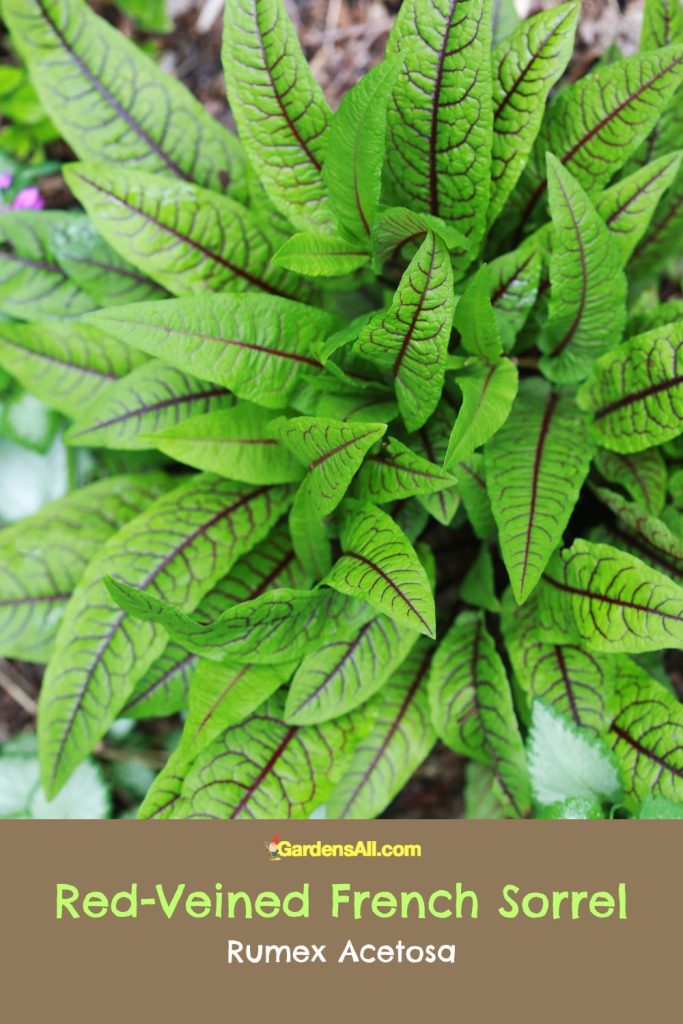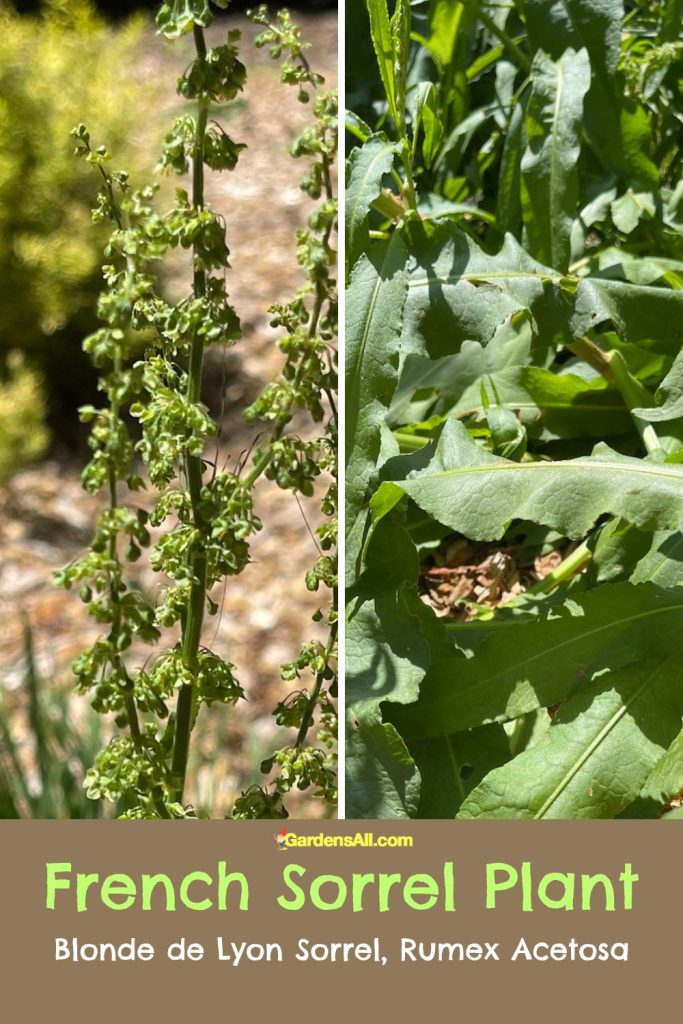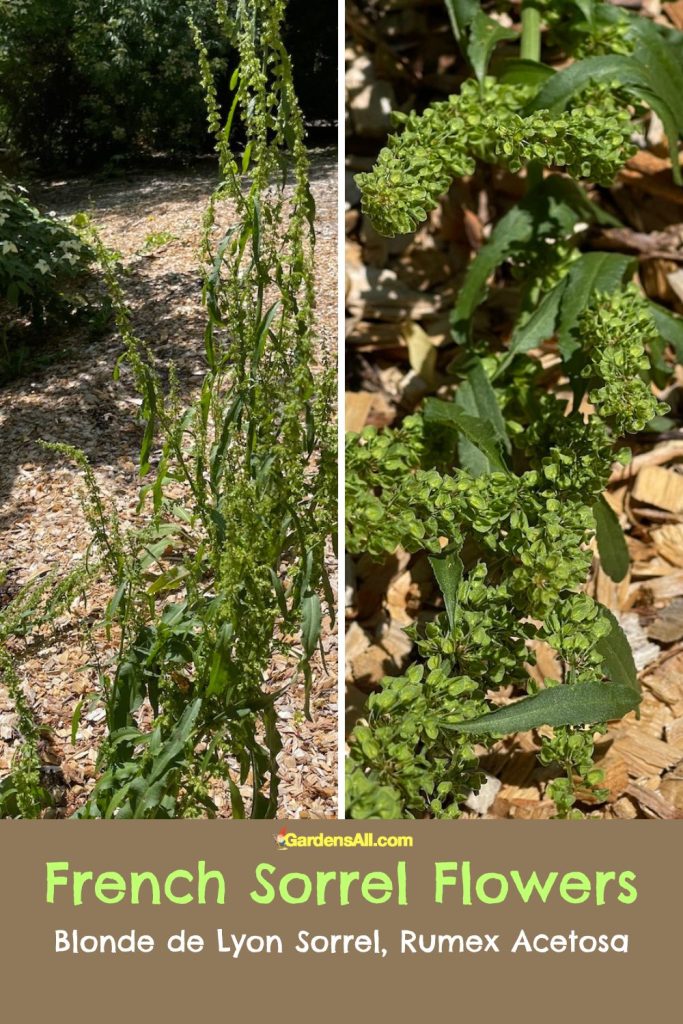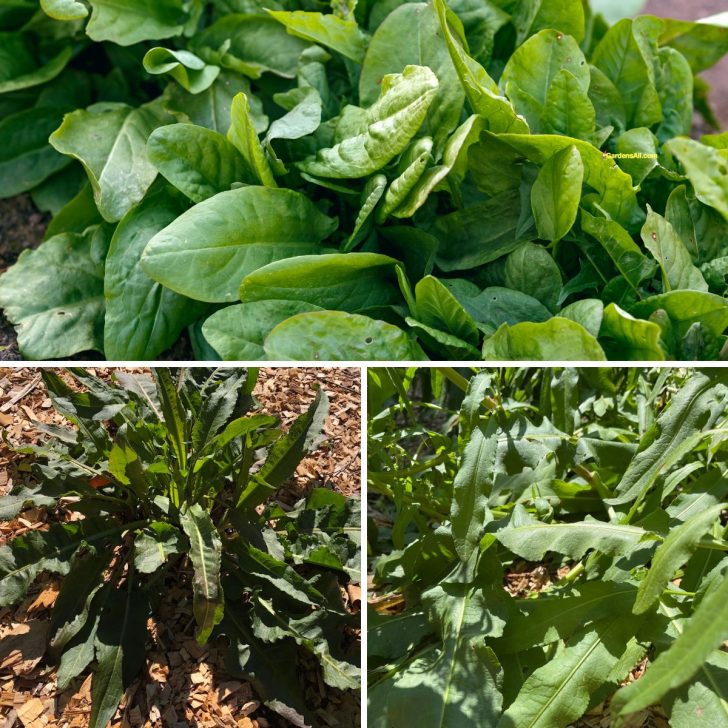AKA Garden Sorrel, and Botanically as Rumex Acetosa
When it comes to adding a tangy twist to your culinary creations, consider growing French Sorrel (Rumex acetosa).
This vibrant herb not only adds a delightful flavor to dishes but also boasts several health benefits. Let’s dive into the origin, growing zones, seasons, edible parts, and various uses of this remarkable plant.
Getting to Know French Sorrel
French Sorrel Origin
French Garden Sorrel is native to Europe and Asia, with a rich history in French cuisine. It has been cultivated for centuries for its distinct sour taste and culinary versatility. Today, it is widely grown in many parts of the world, including North America, Europe, and Asia.
What Are the French Sorrel Growing Zones and Climate?
French Sorrel is a hardy perennial herb that thrives in temperate climates in USDA hardiness zones 4-9. Although this garden sorrel can also adapt to slightly colder or warmer conditions depending on the specific microclimate. In colder regions, the plant may die back during winter and re-emerge in spring.
In our garden in zone 7a in North Carolina, our French sorrel stays green most of the year, and the leaves can be harvested in spring through fall.
Used as an herb, French sorrel leaves can be harvested spring through fall in temperate zones.

When to Plant French Sorrel
The ideal time to plant French garden sorrel is during early spring, once the soil has warmed up and the risk of frost has passed. Sorrel prefers well-drained soil and at least 4-6 hours of direct sunlight each day. It can tolerate partial shade, but that may affect the overall growth and flavor of the leaves.
Seeds or young seedlings can be planted directly in the garden or in containers, keeping in mind that the plant will eventually require some space to spread. As with most plants, it’s best to keep the soil evenly moist, especially during dry periods.
Adding organic compost to the soil will enhance growth and provide necessary nutrients. We also like to add compost tea to our garden plant several times in the season.

French Sorrel Leaves – Taste and Uses
The large vibrant green arrow-shaped leaves are the edible mainstay of the French Sorrel. The leaves are the most commonly consumed part of the plant and have a distinct, tart flavor reminiscent of lemon or green apple. The younger leaves tend to be milder in taste compared to the more mature ones, and are often eaten fresh, whereas the larger older leaves are preferred for cooking.
See our 5 star Creamy Sorrel Soup recipe on our sister site.
French Sorrel Flowers Are Also Edible
The flowers and flower buds of French sorrels are indeed edible. While the primary focus is often on the leaves of sorrel varieties, including Blonde de Lyon, the flowers and buds can also be used in culinary preparations, similar to the leaves.
How to Use French Sorrel
These tart leaves can be used to add a refreshing kick to a variety of dishes, imparting a pleasant acidity akin to how lemon can enhance dishes.
- Eggs
- Fish
- Potatoes
- Sauces
- Salads
- Soups
French Garden Sorrel pairs exceptionally well with fish, eggs, and potatoes. Some chefs even use the leaves to make sorrel-based pesto or infuse them into vinegar for a zesty condiment. French sorrel can also be the feature green leafy vegetable in soups.
French Sorrel Health Benefits and Nutritional Value
In addition to its culinary appeal, French Garden Sorrel offers several health benefits. The leaves contain various essential nutrients, including vitamins A, C, and K, as well as minerals like potassium and iron.
Garden sorrel has ad high antioxidant content, which helps protect against cellular damage caused by harmful free radicals. Sorrel is also reputed to possess diuretic properties and may aid in digestion.
We’ve written about some of the many more sorrel benefits here.
CAUTION: Sorrel is a potent herb best used in moderation, especially by individuals with a history of kidney stones or other oxalate-related conditions.
Conclusion
In conclusion, French Garden Sorrel is a versatile herb that adds a tangy zest to a wide range of dishes. Its origins in European cuisine have cemented its reputation as a beloved ingredient, and its ease of cultivation makes it accessible to home gardeners. Whether used fresh in salads or cooked in sauces, the vibrant leaves of Rumex acetosa are sure to elevate your culinary creations with their refreshing and distinctive flavor.
Blonde de Lyon Sorrel: A Delicate Twist on a Classic Herb
We’re growing the ‘blonde de lyon sorrel’ variety.

Characteristics and Appearance of Blonde de Lyon Sorrel
Blonde de Lyon Sorrel is a cultivated variety of Rumex acetosa. This variety of French sorrel is taller in stature, with larger, longer leaves, and long stalks of yellowish green flower buds, befitting of the name “Blonde de Lyon”. The leaves of this sorrel cultivar are not only larger but tend to be more tender, making them ideal for culinary purposes.
Growing Tips for Blonde de Lyon Sorrel
Like its smaller counterpart, Blonde de Lyon Sorrel thrives in temperate climates in USDA hardiness zones, 3-9, and is easy to cultivate. This French sorrel is typically grown as a perennial herb and has similar growing requirements as other Garden Sorrels.
Culinary Uses and Flavor Profile
Blonde de Lyon Sorrel offers a subtler variation in taste compared to the traditional green sorrel, but is used in much the same ways as the common sorrel variety. While it retains the characteristic tanginess, the flavor is milder and more delicate, with a hint of sweet beyond the tart.
The tender leaves of this cultivar are particularly prized for their larger size and softer texture, making them a delightful addition to a variety of culinary creations.
You Can Also Eat the Flowers of Blonde de Lyon Sorrel
The flowers of ‘blonde de lyon’ sorrel are typically small and delicate, with a pale yellow or greenish hue that complements the herb’s overall appearance. These flowers can be used as an edible garnish, adding a visually appealing touch to salads, soups, or other dishes. Both the flowers and buds of Blonde de Lyon Sorrel taste similar to the leaves, but a little milder.
Harvesting the flowers and buds at their freshest and using them promptly will yield the best flavor and visual appeal. As with any edible flower or bud, it’s recommended to ensure they have not been treated with any chemicals or pesticides before consuming, and to avoid roadside harvests. It’s also a good idea to rinse them thoroughly, as you want to avoid any hidden “protein”!
Including the edible flowers and buds of Blonde de Lyon Sorrel in your culinary endeavors can provide an additional dimension of taste, texture, and aesthetics. It allows you to explore the herb’s versatility and maximize its potential in creating delightful and visually appealing dishes.
Sorrel flowers can also be used to infuse oils or vinegar, providing a subtle sorrel flavor and an attractive floral note with visual appeal.

I’m LeAura Alderson, a garden, herb and plant enthusiast with a passion for discovering the many edible and medicinal benefits of the plants all around us, including the weeds! I’m a writer, editor and media publisher for our family of websites.
While I was certified in fitness and life coaching, I am NOT a health practitioner. However, I’m a lifelong health enthusiast, with a keen interest in healthy, organic foods and making home remedies and the content we share is from our own experience and usage as well as that extracted from scientific research so that you can explore further on your own.
Always seek the advice and guidance of your health practitioners first and foremost.
As a family we’re steadily expanding our gardening, experimentation and knowledge around all things gardening, edible landscaping, fresh organic foods and self sustainability with farming in our future. I also own and manage iCreateDaily.com, a site all about transformation through creation, and the power of positivity, optimism and mindset.

